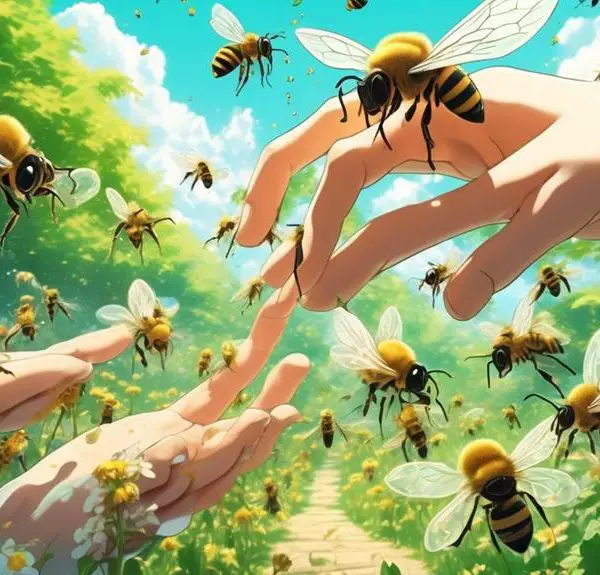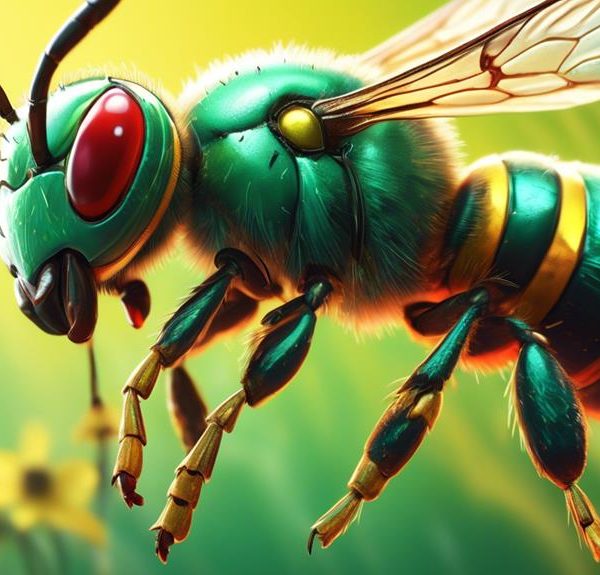Sweat bees' intriguing name sparks curiosity; uncover the truth behind their moniker, their human interactions, and the mystery of their sweat-inducing stings.
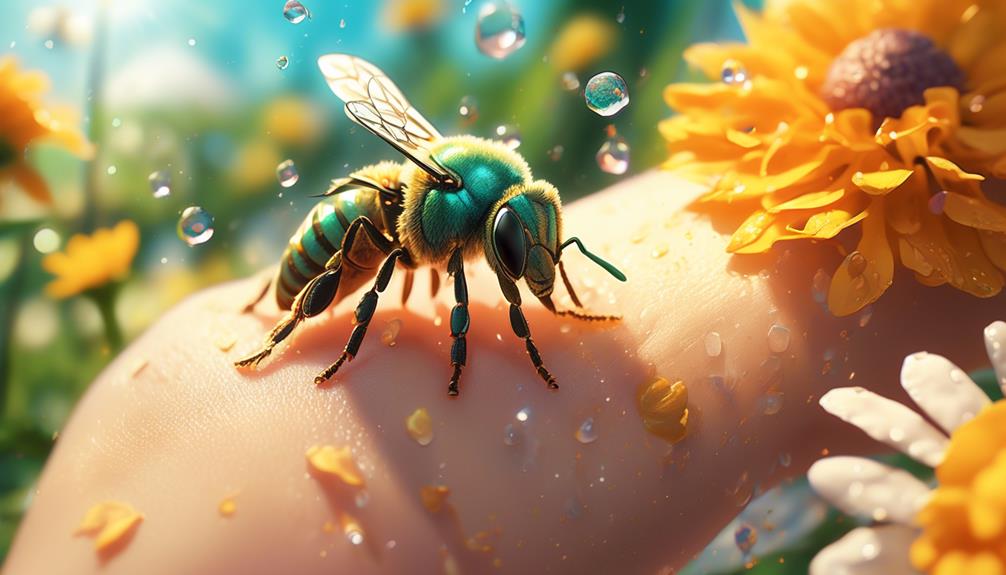
Do Sweat Bees Make You Sweat
Ever wondered why sweat bees are named so? You're not alone. Many people find themselves intrigued by this peculiar naming, questioning whether these tiny insects indeed cause you to perspire more than usual.
As you venture further into this topic, you'll uncover the reasons behind their intriguing moniker, their interaction with humans, and whether or not their sting can actually make you break out in a sweat.
But, for now, let's just say the answer might not be what you expect, piquing your curiosity even more.
Key Takeaways
- Sweat bees are attracted to human sweat because they extract salt from it, but they are not typically aggressive towards humans.
- Sweat bees have a diverse social structure, with some being solitary and others forming small colonies.
- Sweat bee stings are less painful compared to other bee stings, and severe reactions are rare.
- Sweat bees are crucial pollinators and play an important role in fertilizing flowers and contributing to the growth of fruits and vegetables.
Understanding Sweat Bees
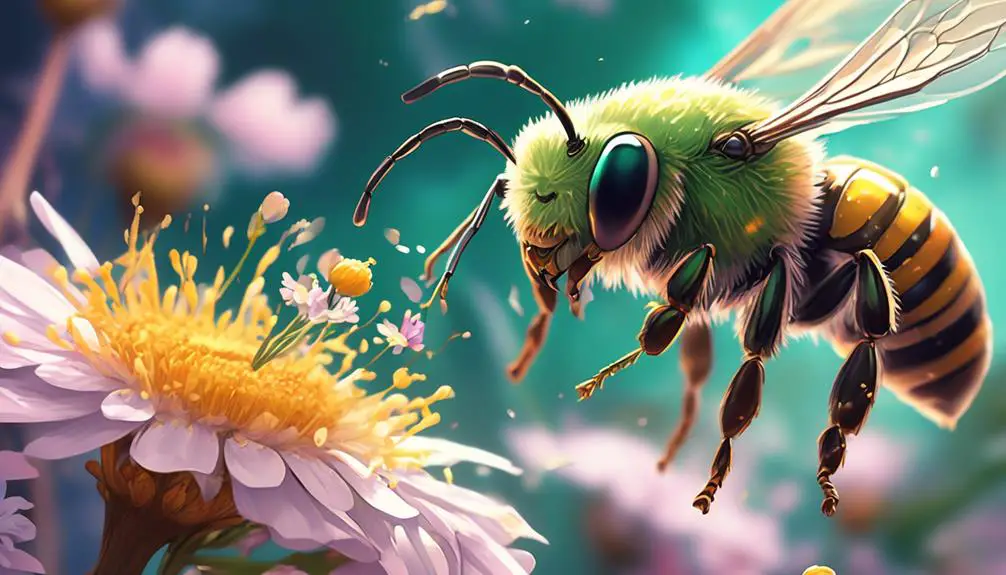
Despite their intimidating name, sweat bees are fascinating insects that you should strive to understand better. They're a diverse group, encompassing over 1000 species in North America alone. What sets them apart? Well, it's their affinity for human sweat, which they lick to extract the salt. Don't worry, though! Their sting is significantly less painful than that of other bees.
You'll find that sweat bees have a unique social structure. Unlike honey bees, they don't always live in large, organized colonies. Some are solitary, while others form small colonies with a single queen and a few workers. It's this diversity in social behavior that makes them particularly interesting to scientists.
Now, you might be wondering about their role in the ecosystem. Sweat bees are crucial pollinators, contributing to the growth of wildflowers and crops. They're especially important in certain areas where other pollinators are scarce.
The Origin of Their Name
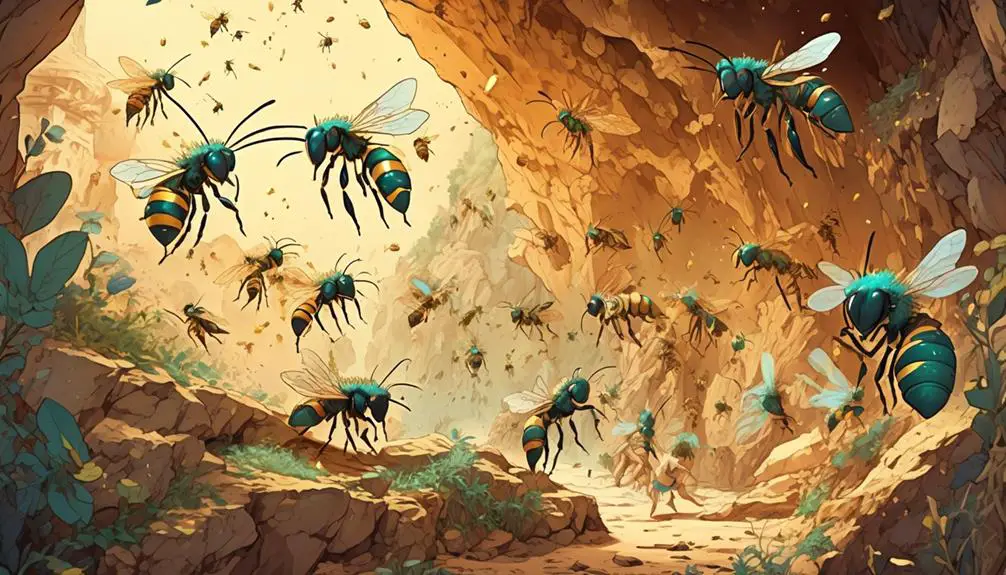
While understanding their fascinating biology and social behavior is intriguing, you might be curious as to why these creatures are called 'sweat bees' in the first place. The origin of their name is tied to their unique behavior. Sweat bees are attracted to the salt content in human sweat, thus earning their common name.
Sweat bees, belonging to the Halictidae family, comprise about 1000 species in North America alone. Their interaction with humans, especially their affinity for sweat, is an evolutionary adaptation to survive in environments where salt is scarce.
To give you a clear picture, let's look at the table below:
Behavior | Significance |
|---|---|
Attracted to sweat | Source of salt |
Lands on skin | To lick sweat |
Sting when threatened | Defense mechanism |
Diverse in species | Adaptation to different environments |
Sweat Bees Interaction With Humans
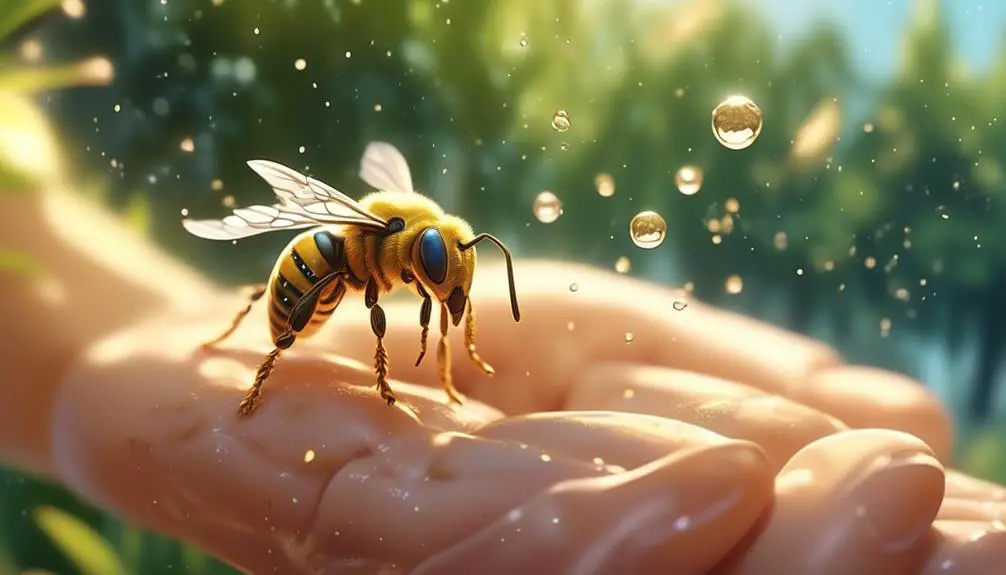
You mightn't realize it, but your everyday encounter with sweat bees can tell a lot about their survival strategies and how they've adapted to coexist with humans. These bees aren't typically aggressive; they're drawn to you because they're attracted to human sweat, hence their name. It's not that they enjoy making you uncomfortable, but your sweat provides them with essential salts they need for survival.
These bees' interaction with humans is a perfect case of mutualism. While you provide them with their needed minerals, they play a crucial role in the pollination of your garden and local ecosystem. Despite their pesky reputation, sweat bees are beneficial insects, contributing to the balance of nature.
However, their sting can be a downside. If you swat at them or accidentally squish one, it might retaliate with a mild sting. It's not as painful as a honey bee sting, but it can be uncomfortable, especially for those with bee allergies. Respectful distance and calm behavior are the best strategies when dealing with sweat bees.
The Truth About Sweat Bees Stings
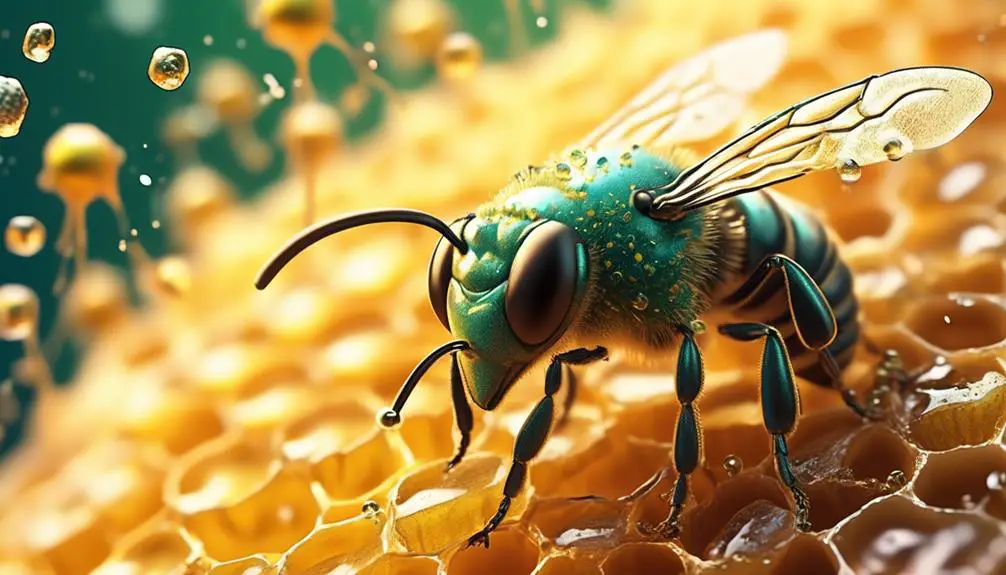
Speaking of their not-so-pleasant side, let's get into the details about sweat bees' stings, a topic often surrounded by misconceptions. You might've heard horrifying stories about sweat bee stings. Truth be told, sweat bee stings aren't nearly as painful or dangerous as those of other bees or wasps. These bees are relatively harmless and they aren't aggressive by nature.
Though sweat bees may sting when provoked or squashed against your skin, their sting is comparatively mild. It's generally rated a 1.0 on the Schmidt Pain Index, which is a scale used to compare the pain of various insect stings. That's lower than a honey bee sting, which is rated at a 2.0. You'll likely feel a brief, sharp pain followed by mild swelling or redness, but severe reactions are rare.
You should also know, it's primarily the female sweat bee that stings. Males don't have a stinger at all. So, before you start panicking at the sight of a sweat bee, remember they're far from dangerous. They're mostly just interested in your sweat, not in causing you harm.
Armed with this knowledge, you're better prepared to coexist peacefully with these tiny, sweat-loving creatures.
Interesting Facts About Sweat Bees
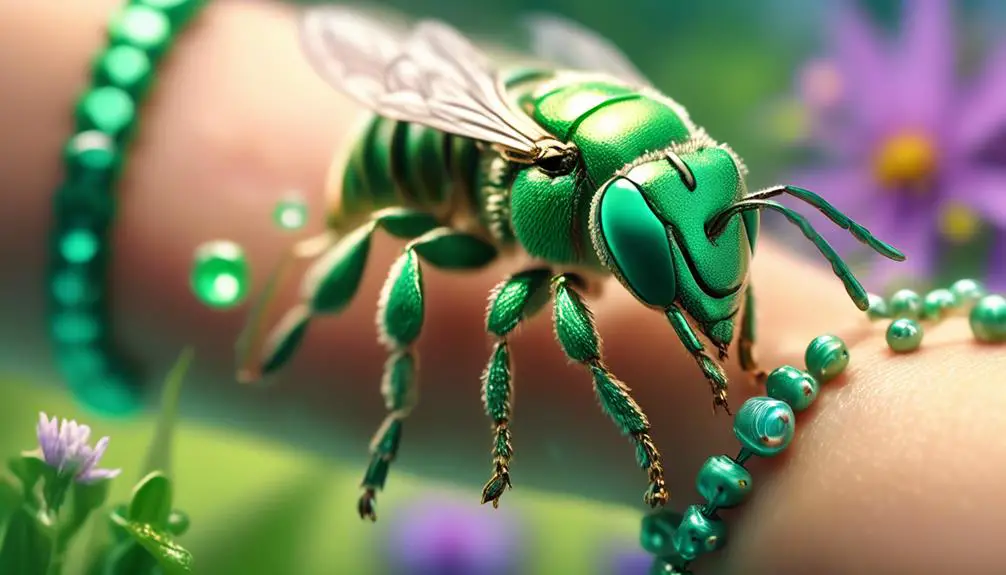
Beyond their unique attraction to human sweat, sweat bees boast an array of fascinating characteristics that set them apart in the insect world. Unlike their honeybee counterparts, sweat bees are solitary creatures. They don't live in large colonies, but dwell in burrows in the ground or in wood, where females individually lay their eggs.
Sweat bees display an astonishing spectrum of colors, ranging from metallic blue-green to vibrant bronze. But don't let their attractive appearance fool you; these insects have a preference for perspiration. They're attracted to the salts and electrolytes contained in your sweat, which they need for nutrition.
Yet, despite their name and habits, sweat bees play an important role in our ecosystem. They're excellent pollinators, helping to fertilize flowers by transferring pollen. You'd be surprised to know that many of your favorite fruits and vegetables owe their existence to these little sweat-lovers.
Additionally, sweat bees exhibit a unique trait among bees: they can be both social and solitary. Some species live alone, while others form small colonies. This versatility adds another layer to their intrigue.
Conclusion
In conclusion, you don't have to worry about sweat bees making you sweat. Their name comes from their attraction to human perspiration, not their ability to induce it.
Their interaction with humans is generally harmless unless provoked. Stings are rare and mild, making them less threatening than other bees.
So, the next time you see a sweat bee, remember these fascinating facts and appreciate their unique role in the ecosystem.

